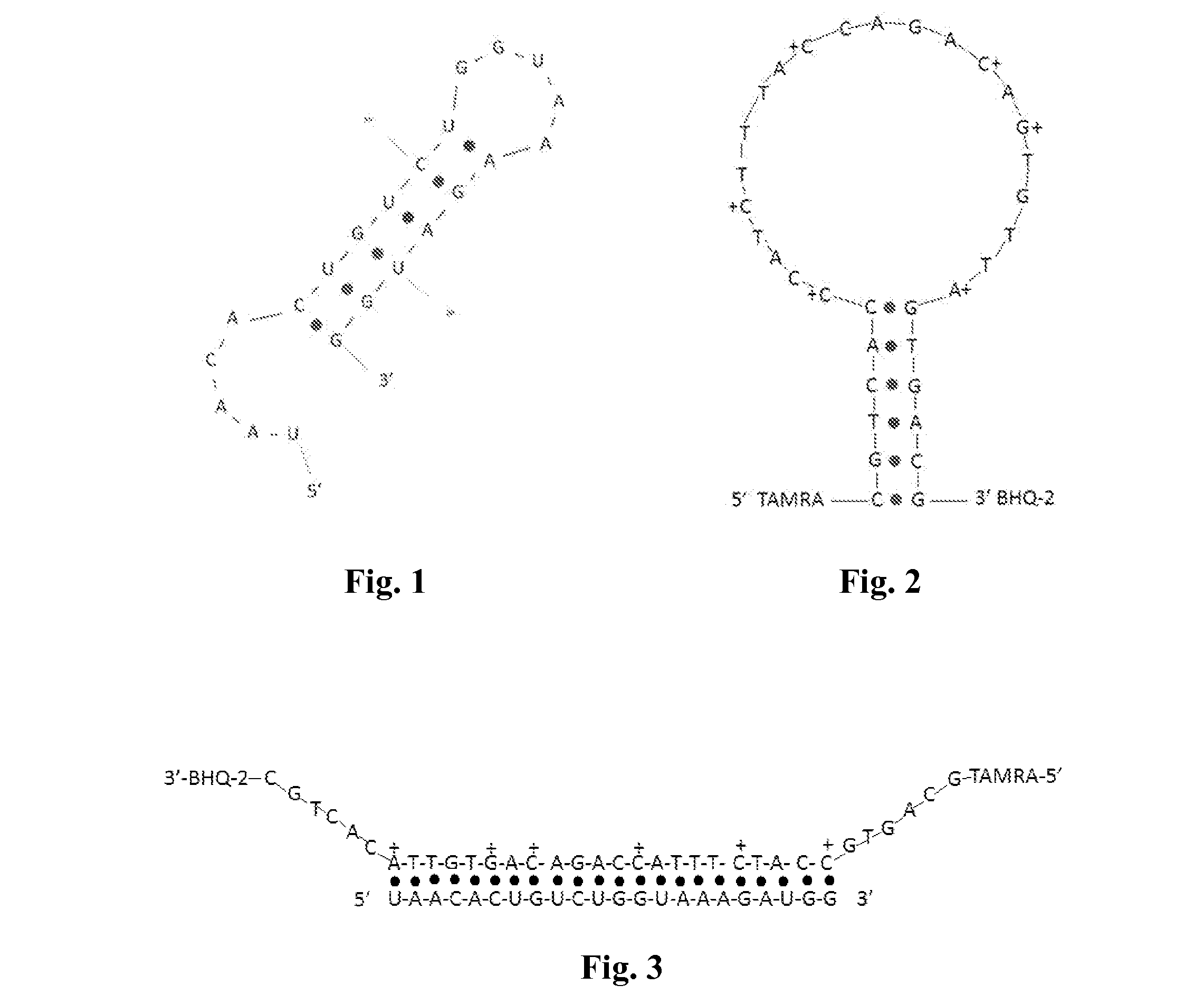Methods and compositions for multiplexed and ultrasensitive microrna detection
a microrna and multiplexing technology, applied in the field of methods and compositions for multiplexing and ultrasensitive microrna detection, can solve the problems of reducing assay sensitivities, presenting discomfort to patients, and not always providing accurate psa tests, so as to improve the ability of multiplexing and reduce the risk of infection, the effect of quick and simple extraction
- Summary
- Abstract
- Description
- Claims
- Application Information
AI Technical Summary
Benefits of technology
Problems solved by technology
Method used
Image
Examples
Embodiment Construction
[0039]Provided herein, by way of example, are methods of detecting and quantifying miR-141 in a serum / plasma sample from an individual.
[0040]Sample preparation involves purification of a serum / plasma sample using a size exclusion filtration step. E.g., 500 μl of serum / plasma is filtered through an Amicon centrifugal filter (10 kDa molecular weight cut-off) for 15 min at 14,000 g to separate the miRNA from most of large protein impurities. Sample sizes may range from 0.1 μl to 20 ml, and the size exclusion filtration step may be performed using microfluidics and / or centrifugation devices as described in the field. For miRNA analysis in cells or tissues, the miRNA needs to be isolated first using e.g. the mirVana™ PARIS™ Kit (life Technologies™).
Hybridization Protocol
[0041]E.g., 50 μl of the pass through from the filtration step is hybridized with 1 nM of a LNA-based molecular beacon probe (5′-TAMRA / CGTCAC+CCAT+CTTTA+CCAGA+CA+GTGTT+AGTGACG / 3′-BHQ2) in 10 mM Tris pH 8...
PUM
| Property | Measurement | Unit |
|---|---|---|
| Molar density | aaaaa | aaaaa |
| Fluorescence | aaaaa | aaaaa |
| Level | aaaaa | aaaaa |
Abstract
Description
Claims
Application Information
 Login to View More
Login to View More - R&D
- Intellectual Property
- Life Sciences
- Materials
- Tech Scout
- Unparalleled Data Quality
- Higher Quality Content
- 60% Fewer Hallucinations
Browse by: Latest US Patents, China's latest patents, Technical Efficacy Thesaurus, Application Domain, Technology Topic, Popular Technical Reports.
© 2025 PatSnap. All rights reserved.Legal|Privacy policy|Modern Slavery Act Transparency Statement|Sitemap|About US| Contact US: help@patsnap.com



